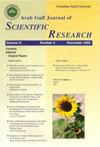利用酿酒酵母通过乙醇发酵工艺从木薯皮中生产乙醇
Q4 Business, Management and Accounting
引用次数: 0
摘要
设计/方法/途径在小规模烧瓶实验中,将磨碎的木薯皮分为三个处理组,每 20 克木薯皮进行两阶段水解。在 CP 发酵过程中加入不同量的水。发酵结果表明,乙醇生产率和发酵效率最高,分别为 17.38 ± 0.30% 和 0.139 ± 0.003 gL-1 h-1。本研究结果表明,在通过糖发酵生产乙醇的各种酵母菌中,麦角菌是工业乙醇生产中的关键角色。为了设计出真正可持续的工艺,应该对这一工艺进行全面分析并逐步扩大到工业水平。原创性/价值本文是一项原创性研究工作,涉及利用 S. cerevisiae 微生物从木薯皮中生产生物乙醇。使用酿酒酵母发酵 72 h 时获得了最高的乙醇产量。本文章由计算机程序翻译,如有差异,请以英文原文为准。
Ethanol production from cassava peels using Saccharomyces cerevisiae via ethanologenic fermentation process
PurposeThis study aims to assess the effect of water variation on bioethanol production from cassava peels (CP) using Saccharomyces cerevisiae yeast as the ethanologenic agent.Design/methodology/approachThe milled CP was divided into three treatment groups in a small-scale flask experiment where each 20 g CP was subjected to two-stage hydrolysis. Different amount of water was added to the fermentation process of CP. The fermented samples were collected every 24 h for various analyses.FindingsThe results of the fermentation revealed that the highest ethanol productivity and fermentation efficiency was obtained at 17.38 ± 0.30% and 0.139 ± 0.003 gL−1 h−1. The study affirmed that ethanol production was increased for the addition of water up to 35% for the CP hydrolysate process.Practical implicationsThe finding of this study demonstrates that S. cerevisiae is the key player in industrial ethanol production among a variety of yeasts that produce ethanol through sugar fermentation. In order to design truly sustainable processes, it should be expanded to include a thorough analysis and the gradual scaling-up of this process to an industrial level.Originality/valueThis paper is an original research work dealing with bioethanol production from CP using S. cerevisiae microbe.HighlightsHydrolysis of cassava peels using 13.1 M H2SO4 at 100 oC for 110 min gave high Glucose productivityHighest ethanol production was obtained at 72 h of fermentation using Saccharomyces cerevisiaeOptimal bioethanol concentration and yield were obtained at a hydration level of 35% agitationHighest ethanol productivity and fermentation efficiency were 17.3%, 0.139 g.L−1.h−1
求助全文
通过发布文献求助,成功后即可免费获取论文全文。
去求助
来源期刊

Arab Gulf Journal of Scientific Research
综合性期刊-综合性期刊
CiteScore
1.00
自引率
0.00%
发文量
0
审稿时长
>12 weeks
期刊介绍:
Information not localized
 求助内容:
求助内容: 应助结果提醒方式:
应助结果提醒方式:


